Download June 2008 - Texas Department of Aging and Disability Services
Transcript
T he MDS Mentor is published in March, June, September, and December each year. If you have an article, an idea for an article, or would like to give us feedback, please see page 4 for our contact information. TEXAS TIP — AA8b=6 (Other State Required Assessment) is not a valid reason for any MDS assessment done in Texas. INSIDE THIS ISSUE: Clinical Update Item H3a 1 More about Incontinence 1 More about Incontinence 2 Coding H1a & H1b 2 The MDS Mentor Cheryl Shiffer, BSN, RN, RAC-CT MDS Clinical Coordinator V O L U M E 1 , I S S U E 2 J U N E 2 0 0 8 Item H3a - Any Scheduled Toileting Plan One of the most frequently miscoded items on the Minimum Data Set (MDS) 2.0 is H3a - Any Scheduled Toileting Plan. This item asks you to indicate whether the resident is on a plan for bowel and/or bladder elimination whereby staff members, at scheduled times each day, either take the resident to the bath room, give the resident a urinal, or remind the resident to go to the toilet during the 14-day look back period. This item includes bowel habit training and/or prompted voiding. Three key concepts to consider when coding item H3a are Scheduled, Toileting, and Plan/Program. Let’s review: Scheduled – means performing the activity according to a spe- cific, routine time that has clearly been communicated to the resident (as appropriate) and to nal, bedpan). Changing wet briefs or garments is NOT included in the definition for Item H3a. Plan/Program – means a specific approach that is organized, planned, documented, monitored and evaluated. All three (3) key components must be present in order to code Item H3a. Completion of the MDS is required by CMS, a federally funded agency. caregivers. Toileting – means voiding in a bathroom, commode or other appropriate receptacle (e.g. uri- The Centers for Medicare and Medicaid Services (CMS) developed a Tip Sheet for Item H3a and some of the tips were included in this article. However, more information is available on the Toileting Plan Tip Sheet and is available on the CMS MDS web site (the link is available on page 4 of this publication), Once at the CMS MDS website, scroll down the page and click on the Toileting Plan Tip Sheet. More About Incontinence: H1a and H1b Automation News Broadband Update 3 New AT&T Global Client 3 Contact Us Websites 4 MDS items H1a and H1b describe the resident’s bowel and bladder continence pattern even with scheduled toileting plans, continence training programs, or appliances during the 14 day look back period. Coding of the items does not refer to the resident’s ability to toilet themselves. A resident can receive extensive assistance in toileting and yet be continent, most likely as a result of staff help. For these two items, determination of whether or not to code incontinence is not a matter of volume, but a matter of skin wetness and irritation, and the associated risk for skin breakdown. Ensure you validate continence patterns with people who know the resident well. Of course the best source would be the resident. However, if the resident is not a reliable source (Continued on page 2) VOLUME 1, ISSUE 2 PAGE More About Incontinence: H1a and H1b members who participate in care of the resident, or direct care staff. Remember Consider continence patterns over the last 14 day period, 24 hours a day, including weekends. If changes in staff assignments or staff turnover is frequent, consider initiating and maintaining a bladder and bowel elimination flow sheet to gather accurate information on which to base your coding and care Celebrate successful MDS coding. (Continued from page 1) of information, ask involved and knowledgeable family members of the newly admitted resident, family planning decisions. For the source of the information in this article, and for more details, see pages 3-119 and 3-120 of the Long Term Care Facility Resident Assessment Instrument (RAI) User’s Manual, dated December 2002 (the CMS MDS web site link is available on page 4 of this publication). Once on the site, scroll down the page and then click on the RAI User’s Manual to un-zip the manual. Once un-zipped, click on chapter 3 and navigate to the pages provided above. “Consider continence patterns over Coding H1a and H1b Coding continence is different from coding other activities of daily living (ADL) as the time period for review covers 14 days. The following is a review for coding H1a Bowel Continence and H1b Bladder Continence. A five-point coding scale is used to describe continence patterns. Notice that in each category, different frequencies of incontinent episodes are specified for bladder and bowel. The reason for these differences is that there are more episodes of urination per day and week, whereas bowel movements typically occur less often. 0. Continent - Complete control (including control achieved by care that involves prompted voiding, habit training, reminders, etc.). 1. Usually Continent - Bladder, incontinent episodes occur once a week or less; Bowel incontinent episodes occur less than once a week. 2. Occasionally Incontinent - Bladder incontinent episodes occur two or more times a week but not daily; Bowel incontinent episodes occur once a week. 3. Frequently Incontinent - Bladder incontinent episodes tend to occur daily, but some control is present (e.g., on day shift); Bowel incontinent episodes occur two to three times per week. 4. Incontinent - Has inadequate control. Bladder incontinent episodes occur multiple times daily; Bowel incontinent is all (or almost all) of the time. Choose one response to code level of bladder continence and one response to code level of bowel continence for the resident over the last 14 days. Code for the resident’s actual bladder and bowel continence pattern - i.e., the frequency with which the resident is wet and dry during the 14-Day assessment period. Do not record the level of control that the resident might have achieved under optimal circumstances. For bladder incontinence, the difference between a code of “3” (Frequently Incontinent) and “4” (Incontinent) is determined by the presence (“3”) or absence (“4”) of any bladder control. To ensure accurate coding in H1a/H1b, assessors must use multiple sources of information to accurately code (e.g., resident interview and observation, review of the clinical record, including flow sheets, and discussions with direct care staff across all shifts.) Source: RAI User’s Manual, pages 3-120 & 3-121. the last 14 day period, 24 hours a day, including weekends.” 2 VOLUME 1, ISSUE 2 PAGE Automation News by Cecile Hay, MDS Automation Coordinator We pledge... MDS AND A CHANGE OF OWNERSHIP We all know how frustrating it is to go through a change of ownership (CHOW) and lose access to previously submitted MDS assessments. It becomes impossible to submit a Significant Correction assessment , modify or inactivate an assessment, or submit a discharge when you are cleaning up your Missing Assessment Report. The Centers for Medicare and Medicaid Services (CMS) requires facilities to retain the ability to correct previously submitted data. If your facility is going though a CHOW, work with your information technology (IT) department to backup your MDS data so you can import the data if your MDS software changes. If either software is not amenable to this solution, you may wish to use one of the following options. Retain a computer with the old MDS software and assessments installed to allow updates to data from the previous ownership time period. Install the MDS RAVEN software, which is free software from CMS and available on the QIES Technical Support Office web site (the link is on page 4 of this publication). Click on RAVEN. Import the old assessment data into RAVEN so you may make your update and submit the assessment. Broadband Update CMS determined MDS assessments and reports can be securely transmitted over broadband lines through an IP-Sec connection into CMS’ Medicare Data Communication Network (MDCN). Providers are required to obtain connection to MDCN via an Internet Service Provider (ISP). The ISP connection may be made through dial-up modem, cable modem or through your corporate internet connection. CMS recognizes there is an issue with the MDCN connection when the Provider uses Network Address Translation (NAT). CMS is evaluating solutions to this problem. The MDCN direct dial-up (non-ISP) connection termination date has been extended until CMS resolves the NAT issue. It is highly recommended the Provider look for their own alternatives and begin submitting via their ISP. If you have not done so, please install, connect, and submit assessments and retrieve reports using AT&T Client Software. The software and the loading instructions are available at www.qtso.com Click on MDCN/AT&T Client Software to obtain the download. For assistance with your download, contact the MDCN at 800.905.2069. New AT&T Global Client Version Available The AT&T Global Client, version 7.2.1 was approved for use with MDS. It is reported to be more user friendly than the prior version. Please uninstall the version you are currently using before installing the version 7.2.1. Contact your IT staff if you need assistance. Use the following steps to download version 7.2.1: Go to the QIES Technical Sup- CASPER Login ID and Password Remember to use your MDS login ID and password to run your CASPER Quality Management/Quality Indicator (QM/QI ) reports. port Office (the link is on page 4 of this publication). Click on MDCN/AT&T Client Software Information. Click on AT&T Global Client Version 7.2.1 to start the download. Note: Download AT&T Global Client only from the QTSO website. Versions on the AT&T public web site are not approved for use with the MDS. It’s time for lots of summer fun, baking in the Texas sun. Vacations, swimming, and fire works too, hey, don’t forget the assessments are due!! 3 Cheryl Shiffer, BSN, RN, RAC-CT Contact Us Cecile Hay, LMSW MDS Clinical Coordinator MDS Automation Coordinator 11307 Roszell Street, Room 1910 P.O. Box 149030 San Antonio, TX 78217 Austin, TX 78714-9030 Mail Code: 279-4 Mail Code E-345 Phone: 210.619.8010 Phone: 512.438.2396 Fax: 210.619.8159 (Shared Fax-Call First) Fax: 512.438.4286 (Shared Fax-Call First) E-Mail: [email protected] E-Mail: [email protected] Useful Web Links CMS MDS Training Web Site: MDS computer-based training (CBT). http://www.mdstraining.org/upfront/u1.asp CMS MDS Web Site: MDS 2.0 Highlights, MDS/RAI Manual with updates and a link to MDS 3.0. http://www.cms.hhs.gov/NursingHomeQualityInits/20_NHQIMDS20.asp DADS MDS Web Site: Texas MDS Policy page. http://www.dads.state.tx.us/providers/MDS/index.cfm Nursing Home Compare: CMS site that compares Nursing Homes in a given area. http://www.medicare.gov/NHCompare/Include/DataSection/Questions/SearchCriteria.asp Help is QIES TECHNICAL SUPPORT OFFICE (QTSO): MDS 2.0/3.0, RAVEN, and AT&T Client Software information. Validation Report Messages, Guides, Training and DAVE/DAVE 2 Tip sheets. https://www.qtso.com/ Just a Click Away Quality Matters MDS Web Site: News and clinical assistance for MDS coordinators, including The MDS Mentor. http://qmweb.dads.state.tx.us/MDSweb/ Quality Reporting System (QRS): DADS information site on Texas nursing homes. http://facilityquality.dads.state.tx.us/ NEW! Sign up for E-mail Updates: Go to http://www.dads.state.tx.us/ Click on “Sign up for E-mail Updates” in the upper-right corner. Enter your e-mail address and select Nursing Facility Resources. This will ensure you will get communications as well as The MDS Mentor. NEW! TILES to RUGS: http://www.dads.state.tx.us/providers/TILEStoRUGS/index.html




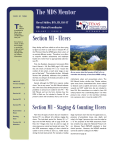
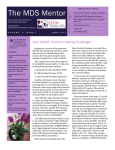
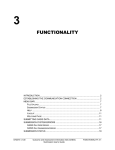
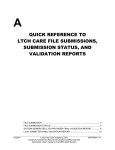
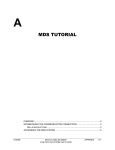

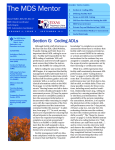
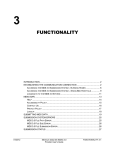
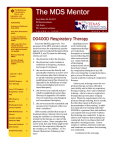

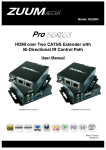
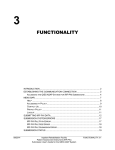
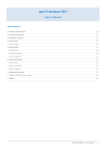
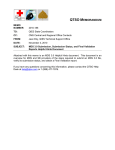
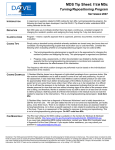
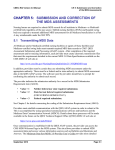
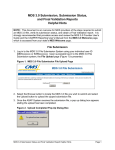
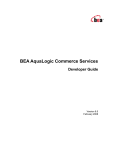
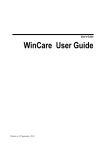
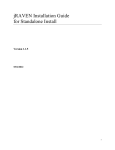

![Front End Risk Adjustment System [ FERAS ] User](http://vs1.manualzilla.com/store/data/005730281_1-6f4c2bdb0bfee36132bd7754fa830eb4-150x150.png)